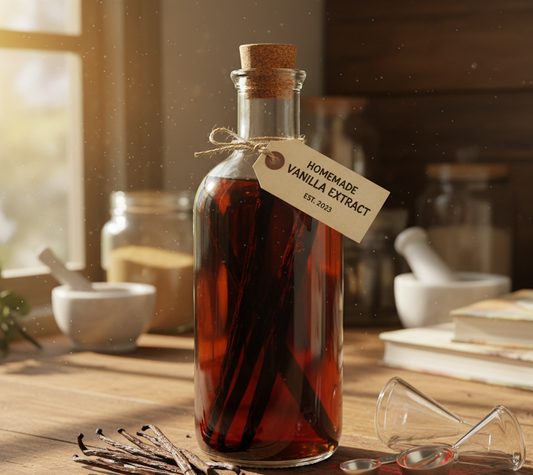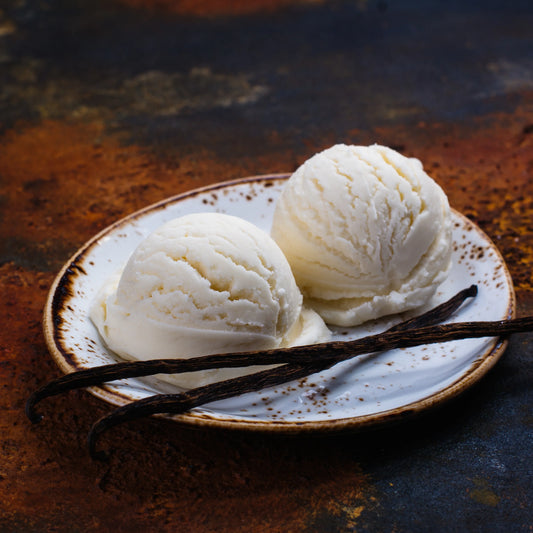
Vanilla Bean Powder vs Paste vs Whole Beans – What’s the Difference?
Share
Introduction: Why Vanilla Form Matters
Vanilla is more than a flavoring—it's a culinary essential. But not all vanilla is created equal. Whether you're a baker, chef, or simply passionate about cooking with high-quality ingredients, understanding the difference between vanilla bean powder, paste, and whole beans can elevate your recipes.
 1. Whole Vanilla Beans – The Gold Standard
1. Whole Vanilla Beans – The Gold Standard
What are they?
Whole vanilla beans are the purest, most natural form of vanilla. Each pod is filled with fragrant vanilla seeds and essential oils that offer intense flavor and aromatic complexity.
Best for:
- Custards & Crème Brûlée
- Vanilla ice cream
- Homemade extracts
- Infusing syrups and dairy
How to use:
- Slice the vanilla pod lengthwise
- Scrape out the seeds with the back of a knife
- Use both the seeds and pod for maximum flavor
Pros:
- Rich, bold flavor
- Visually appealing (vanilla flecks!)
- 100% natural and unprocessed
Cons:
- Requires prep time
- Shorter shelf life if not stored properly
 2. Vanilla Bean Paste – Convenient & Flavorful
2. Vanilla Bean Paste – Convenient & Flavorful
What is it?
Vanilla bean paste is a thick, syrupy blend of vanilla extract and vanilla bean seeds. It provides the full visual appeal and flavor of real vanilla beans—without the prep work.
Best for:
- Cakes, cookies, cupcakes
- Frostings and buttercream
- Smoothies and sauces
How to use:
- Substitute 1:1 for vanilla extract
- Stir directly into batters and liquids
Pros:
- Easy to measure and use
- Strong vanilla flavor with visible seeds
- Great for everyday baking
Cons:
- May contain sugar or binders
- Slightly less intense than whole beans
 3. Vanilla Bean Powder – Potent & Versatile
3. Vanilla Bean Powder – Potent & Versatile
What is it?
Vanilla bean powder is made by drying and finely grinding whole vanilla beans, resulting in a dark, aromatic powder with a concentrated flavor. It's ideal when you want vanilla without liquid.
Best for:
- Dry baking mixes
- Protein shakes and smoothies
- High-heat recipes (e.g. cookies)
- Keto and paleo desserts
How to use:
- Use ½ tsp for every 1 tsp vanilla extract
- Add directly to dry or wet ingredients
Pros:
- Alcohol-free
- Long shelf life
- Heat stable (won’t burn off)
Cons:
- Doesn’t dissolve in water
- Pricier per ounce
Comparison Table
|
Feature |
Whole Beans |
Vanilla Paste |
Vanilla Powder |
|
Flavor Intensity |
High |
Medium-High |
High |
|
Visual Appeal |
High |
High |
Low |
|
Ease of Use |
Low |
High |
Medium |
|
Shelf Life |
Medium |
High |
High |
|
Alcohol-Free |
Yes |
No |
Yes |
5. How to Store Vanilla Products
To preserve freshness and potency:
- Whole beans: Store in an airtight glass tube or vacuum-sealed pouch. Avoid refrigeration.
- Paste & powder: Store in a cool, dark pantry away from heat or moisture.
Pro Tip: Always seal containers tightly after use to prevent oxidation or drying out.
6. Final Thoughts: Choose What Fits Your Flavor Style
Whether you're whipping up a holiday dessert, brewing homemade vanilla extract, or crafting a clean-label recipe, knowing the differences between vanilla bean powder, paste, and whole beans empowers you to make better choices.
For versatility, choose vanilla bean paste. For purity and intense flavor, opt for whole beans. For dry, heat-stable applications, vanilla bean powder is king.
💬 Still unsure which one is right for your recipe? Drop us a message—we’re happy to help!


